Tourism significantly bolsters numerous economies worldwide, impacting everything from job creation to infrastructure development. SIXT.VN understands the vital role tourism plays, especially in vibrant destinations like Vietnam. For travelers eager to explore Southeast Asia, Vietnam offers a unique blend of culture, history, and natural beauty. Discover how tourism sustains economies globally and how SIXT.VN can make your Vietnamese adventure seamless. Consider exploring cultural tourism and sustainable travel options for a more enriching experience.
1. Understanding the Global Impact of Tourism
Tourism is a powerful economic engine, driving growth and development across the globe. It’s not just about leisure; it’s a significant industry that touches countless lives and livelihoods.
1.1. What Makes Tourism So Important?
Tourism’s importance stems from its ability to generate revenue, create jobs, and stimulate local economies. According to the World Travel & Tourism Council (WTTC), the travel and tourism sector contributed $7.7 trillion to the global economy in 2022, representing 7.6% of global GDP. Furthermore, the industry supported 309 million jobs worldwide, accounting for 9.5% of total employment.
This impact is particularly pronounced in countries where tourism is a primary source of income. In these nations, the influx of foreign currency helps stabilize their economies, fund infrastructure projects, and improve the overall quality of life for residents.
1.2. Tourism’s Ripple Effect
The benefits of tourism extend far beyond the hospitality sector. When tourists visit a destination, they spend money on a wide range of goods and services, from accommodation and transportation to food, souvenirs, and entertainment. This spending supports local businesses, farmers, artisans, and other industries, creating a ripple effect that boosts the entire economy.
Moreover, tourism often leads to infrastructure improvements, such as better roads, airports, and public transportation systems, which benefit both residents and visitors alike. These improvements can also attract further investment and development, leading to long-term economic growth.
1.3. Key Statistics on Global Tourism
- Global Tourist Arrivals: In 2022, international tourist arrivals reached 963 million, a significant increase from the 400 million recorded in 2021, according to the UNWTO.
- Tourism Revenue: Global tourism revenue exceeded $1 trillion in 2022, demonstrating the sector’s strong recovery after the pandemic.
- Job Creation: The tourism industry is a major employer, providing jobs for people of all skill levels in various sectors, including hospitality, transportation, entertainment, and retail.
- Economic Contribution: Tourism contributes significantly to the GDP of many countries, particularly those with attractive natural or cultural resources.
2. Identifying Countries Heavily Reliant on Tourism
Several countries around the world depend heavily on tourism for their economic survival. These nations often have unique attractions that draw visitors from far and wide.
2.1. Factors Determining Tourism Dependency
Tourism dependency is typically measured by the ratio between the revenue received from foreign visitors and a country’s GDP. A high ratio indicates a significant reliance on tourism. Other factors include the number of tourist arrivals, the average spending per visitor, and the contribution of tourism to employment.
Small island nations, in particular, tend to be highly dependent on tourism due to their limited economic diversification options. With their stunning beaches, clear waters, and tropical climates, these islands are popular destinations for tourists seeking relaxation and adventure.
2.2. Top 10 Countries Most Reliant on Tourism
Here are ten countries where tourism plays a crucial role in their economies, reflecting data from 2022:
| Rank | Country | Tourism Contribution to GDP | Key Attractions |
|---|---|---|---|
| 1 | Maldives | 68% | Pristine beaches, luxury resorts, diving and snorkeling |
| 2 | Antigua and Barbuda | 55% | Beautiful beaches, yachting, historical sites |
| 3 | Seychelles | 23.1% | Stunning beaches, unique wildlife, luxury eco-tourism |
| 4 | Jamaica | 23.1% | Vibrant culture, reggae music, beautiful beaches and waterfalls |
| 5 | Belize | 20.3% | Barrier reef, Mayan ruins, ecotourism |
| 6 | Croatia | 18.9% | Historic cities, stunning coastline, islands |
| 7 | Montenegro | 18.2% | Dramatic mountains, beautiful coastline, historic towns |
| 8 | Barbados | 16.2% | Sandy beaches, crystal-clear waters, rich cultural heritage |
| 9 | Albania | 16.2% | Unspoiled beaches, historical sites, affordable travel |
| 10 | Fiji | 14.33% | Idyllic beaches, coral reefs, lush rainforests |
2.3. Case Studies: Examining Tourism’s Role
Let’s take a closer look at how tourism impacts some of these countries:
- Maldives: Tourism accounts for over two-thirds of the Maldives’ GDP, making it the lifeblood of the nation’s economy. The country’s stunning beaches, luxury resorts, and world-class diving sites attract affluent travelers from around the globe. The government has invested heavily in tourism infrastructure, including airports, hotels, and transportation services, to support the industry’s growth.
- Antigua and Barbuda: Tourism is the main source of income and employment for Antigua and Barbuda, contributing over half of the nation’s GDP. The country’s beautiful beaches, yachting facilities, and historical sites draw visitors seeking relaxation and adventure. The government has implemented policies to promote sustainable tourism practices and diversify the tourism product.
- Seychelles: With its stunning beaches, unique wildlife, and luxury eco-tourism offerings, the Seychelles attracts high-end travelers who are willing to spend a premium for an exclusive experience. Tourism accounts for nearly a quarter of the country’s GDP and provides employment for a significant portion of the population.
3. Exploring Specific Countries and Their Tourism Industries
Delving into the specifics of these countries, let’s examine their populations, GDPs, and the average spending per visitor, to better understand their reliance on tourism.
3.1. Fiji: The Island Paradise
Population: 926,000
GDP: $4.8 billion
Area: 18,274 km²
In 2022, revenue from foreign visitors equaled 14.33% of Fiji’s GDP. 636,000 people traveled to Fiji last year, spending $700 million. The average spend per visitor was $1,100.
Fiji is a small island country in the southwest Pacific Ocean, consisting of 330 islands. Known for its fantastic beaches, palm trees, and clear waters, Fiji attracts tourists seeking a tropical escape. The country’s tropical forests and villages offer a glimpse into its rich culture and traditions.
 Fiji's beautiful landscape showcasing its tropical allure and the importance of tourism to its economy
Fiji's beautiful landscape showcasing its tropical allure and the importance of tourism to its economy
3.2. Albania: The Balkan Gem
Population: 2.8 million
GDP: $18.5 billion
Area: 28,748 km²
In 2022, revenue from foreign visitors equaled 16.2% of Albania’s GDP. 6.7 million people traveled to Albania last year, spending $3 billion. The average spend per visitor was $440.
Located west of the Balkan Peninsula on the Adriatic coast, Albania attracts tourists with its white-sand beaches, historical sites, and archaeological monuments. Medical tourism is also a growing sector. UNESCO World Heritage Sites, such as Butrint, Gjirokastër, and Berat, enhance its appeal.
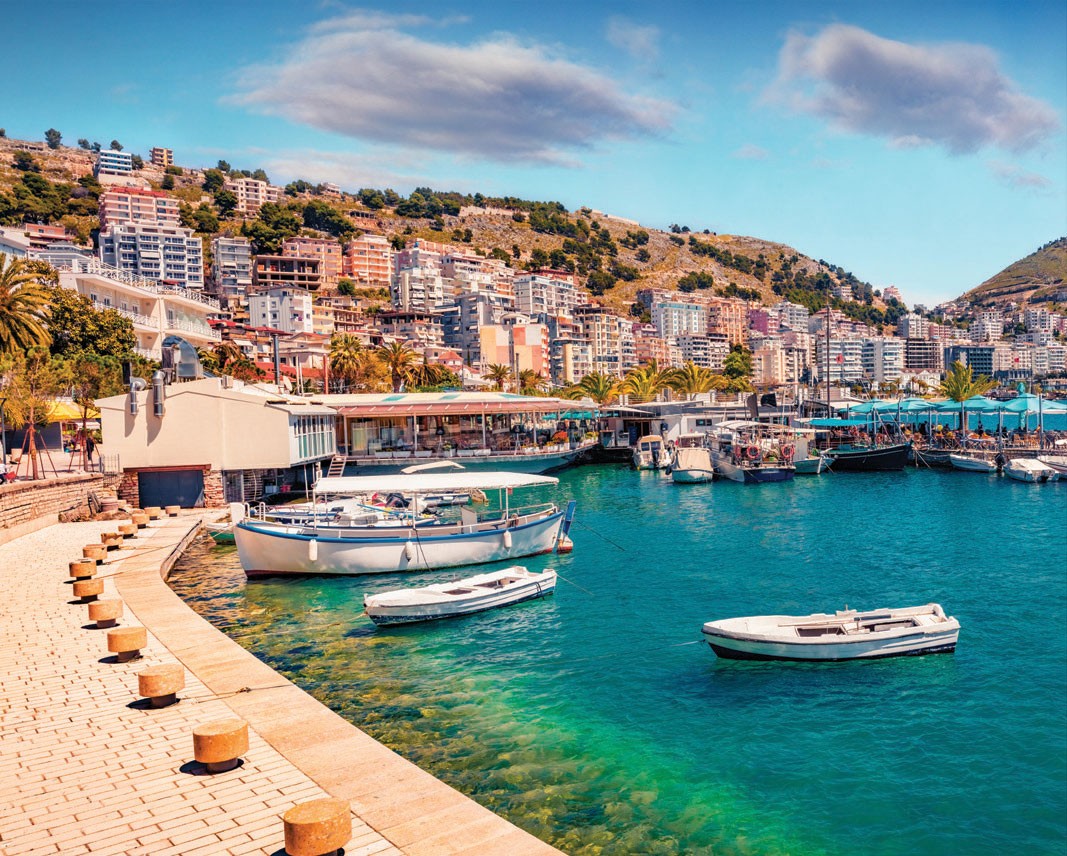 Albania's historical architecture reflects its rich past, drawing tourists interested in culture and history
Albania's historical architecture reflects its rich past, drawing tourists interested in culture and history
3.3. Barbados: The Caribbean Jewel
Population: 268,000
GDP: $5.7 billion
Area: 439 km²
In 2022, revenue from foreign visitors equaled 16.2% of Barbados’s GDP. 443,000 people traveled to Barbados last year, spending $929 million. The average spend per visitor was $2,100.
This Caribbean island, north of Venezuela, is renowned for its white sand and green sea. The dry season from January to May is ideal for seaside tourism, making Barbados a premier holiday destination.
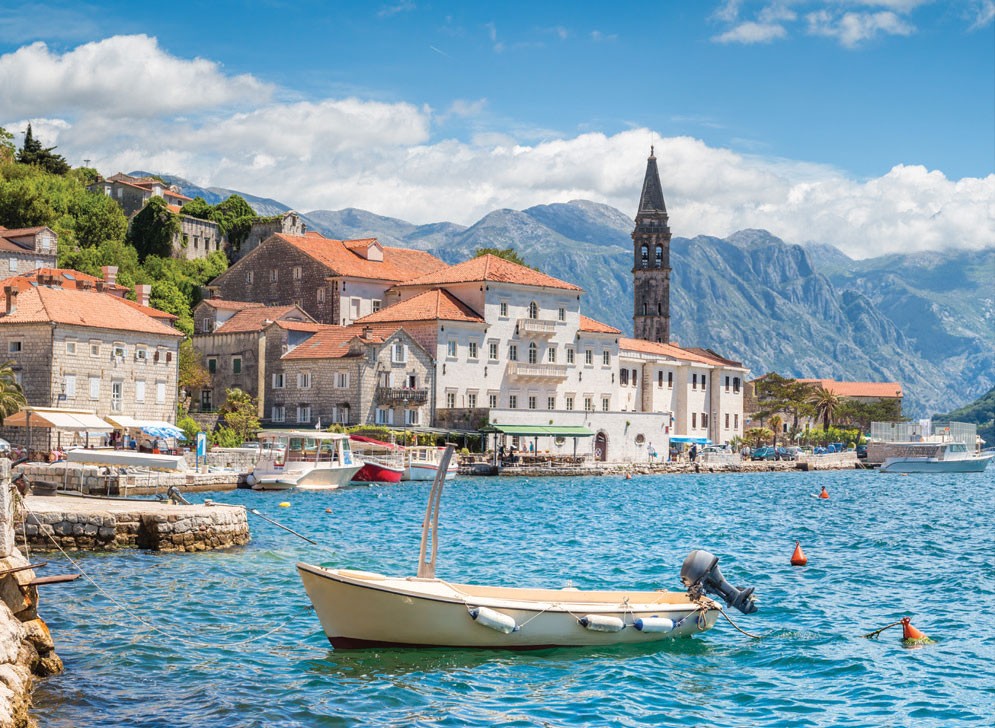 Barbados' pristine beaches and clear waters attract tourists seeking a relaxing Caribbean vacation
Barbados' pristine beaches and clear waters attract tourists seeking a relaxing Caribbean vacation
3.4. Montenegro: The Adriatic Coast
Population: 602,000
GDP: $6.1 billion
Area: 13,812 km²
In 2022, revenue from foreign visitors equaled 18.2% of Montenegro’s GDP. Two million people traveled to Montenegro last year, spending $1.1 billion. The average spend per visitor was $550.
Situated on the Adriatic coast in the northern Balkan Peninsula, Montenegro attracts tourists with its stunning coastline, historical monuments, and architecture. Popular destinations include the 15th-century settlement of Sveti Stefan.
 Montenegro's dramatic coastline and historical sites make it a popular tourist destination in the Balkans
Montenegro's dramatic coastline and historical sites make it a popular tourist destination in the Balkans
3.5. Croatia: The Mediterranean Gem
Population: 3.9 million
GDP: $71 billion
Area: 56,594 km²
In 2022, revenue from foreign visitors equaled 18.9% of Croatia’s GDP. 15.3 million people traveled to Croatia last year, spending $13.5 billion. The average spend per visitor was $900.
Located on the shores of the Mediterranean Sea, Croatia boasts a 1,800 km coastline along the Adriatic. Its historical monuments and architecture, including the Old Town of Dubrovnik, a UNESCO World Heritage Site, are major attractions.
 Croatia's historic Old Town of Dubrovnik, a UNESCO World Heritage Site, draws tourists from around the world
Croatia's historic Old Town of Dubrovnik, a UNESCO World Heritage Site, draws tourists from around the world
3.6. Belize: The Caribbean Coast
Population: 441,000
GDP: $3 billion
Area: 22,966 km²
In 2022, revenue from foreign visitors equaled 20.3% of Belize’s GDP. 371,000 people traveled to Belize last year, spending $600 million. The average spend per visitor was $1,620.
Belize, on the Caribbean coast south of Mexico, attracts tourists with its coast, ancient Mayan temples, and the famous Blue Hole. The average temperature ranges between 24 and 28 degrees throughout the year.
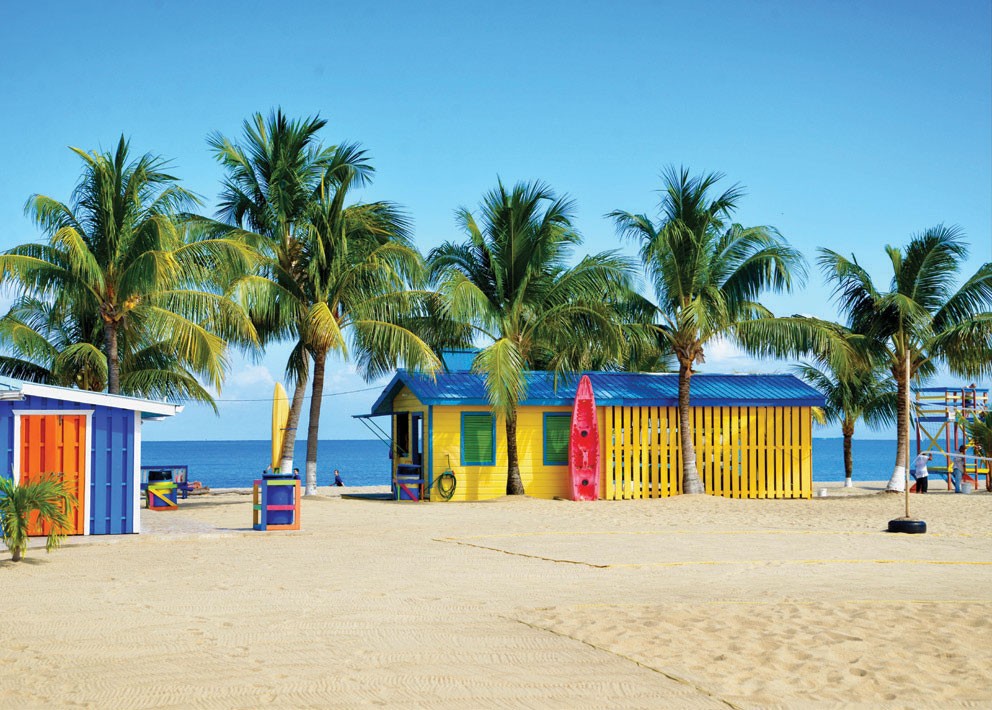 Belize's Blue Hole, a natural wonder, attracts divers and tourists interested in unique natural formations
Belize's Blue Hole, a natural wonder, attracts divers and tourists interested in unique natural formations
3.7. Jamaica: The Island Nation
Population: 2.8 million
GDP: $16 billion
Area: 10,991 km²
In 2022, revenue from foreign visitors equaled 23.1% of Jamaica’s GDP. 2.5 million people traveled to Jamaica last year, spending $3.7 billion. The average spend per visitor was $1,500.
This Caribbean island nation, near Cuba, is famous for its clear sea, hot sun, and white sand. The beach season lasts 10 months, and attractions include canyons, waterfalls, and forests.
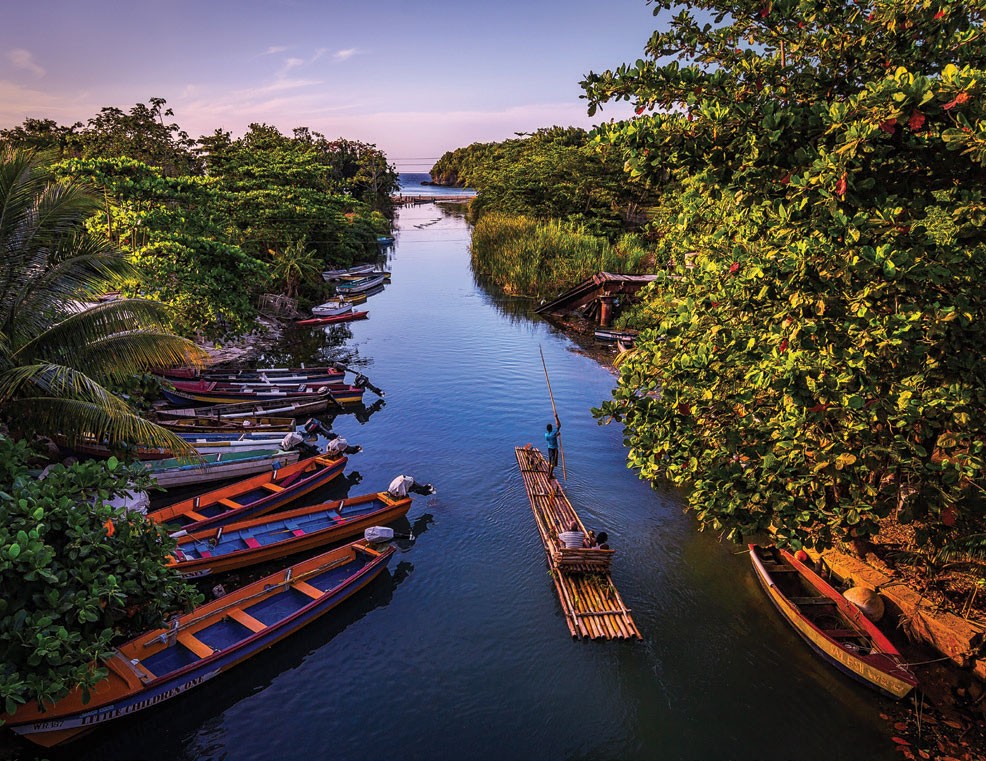 Jamaica's stunning beaches and vibrant culture make it a popular tourist destination in the Caribbean
Jamaica's stunning beaches and vibrant culture make it a popular tourist destination in the Caribbean
3.8. Seychelles: The Indian Ocean Paradise
Population: 100,000
GDP: $1.9 billion
Area: 457 km²
In 2022, revenue from foreign visitors equaled 23.1% of the GDP of the Seychelles. 332,000 people traveled to the Seychelles last year, spending $932 million. The average spend per visitor was $2,800.
Located in the Indian Ocean, north of Madagascar, the Seychelles consist of more than 100 small islands. The country’s beaches offer everything needed for an ideal seaside holiday, with temperatures ranging between 24 and 30 degrees year-round.
 Seychelles' pristine beaches and luxury resorts make it a sought-after destination for high-end travelers
Seychelles' pristine beaches and luxury resorts make it a sought-after destination for high-end travelers
3.9. Antigua and Barbuda: The Caribbean Island Nation
Population: 101,000
GDP: $1.7 billion
Area: 440 km²
In 2022, revenue from foreign visitors equaled 55% of Antigua and Barbuda’s GDP. 265,000 people traveled to Antigua and Barbuda last year, spending $921 million. The average spend per visitor was $3,500.
This Caribbean island nation depends heavily on tourism, linked to its beautiful beaches. The tourist season lasts six to seven months, and much of the country is covered by a national park.
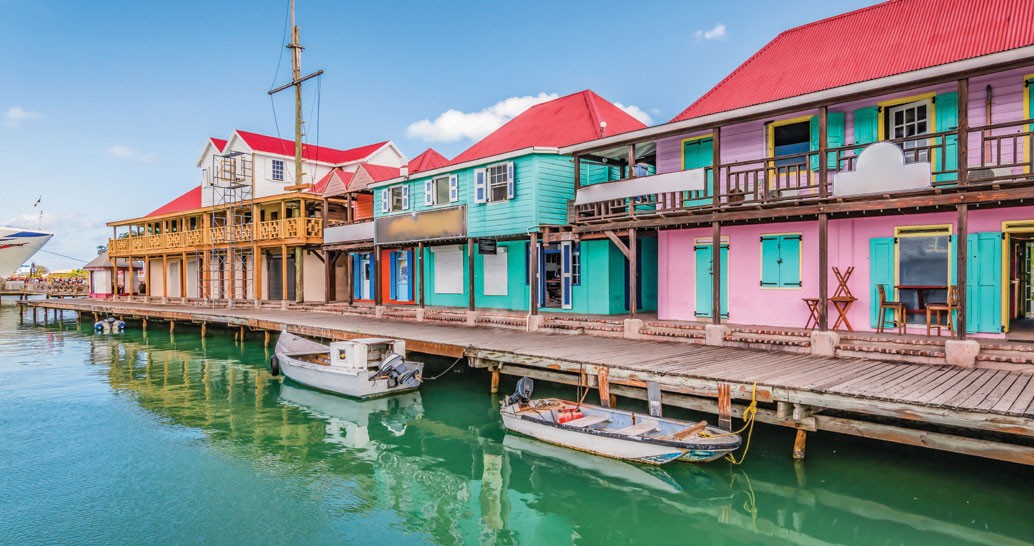 Antigua and Barbuda's beautiful beaches and clear waters contribute significantly to its economy
Antigua and Barbuda's beautiful beaches and clear waters contribute significantly to its economy
3.10. Maldives: The Tropical Paradise
Population: 515,000
GDP: $6.2 billion
Area: 300 km²
In 2022, revenue from foreign visitors equaled 68% of the GDP of the Maldives. 1.7 million people traveled to the Maldives last year, spending $4.2 billion. The average spend per visitor was $2,500.
The Maldives, in the Indian Ocean, consist of 1,190 small islands. Temperatures range between 25 and 35 degrees all year round. Holidaying in the Maldives can be expensive, with some hotels costing over $5,000 per night.
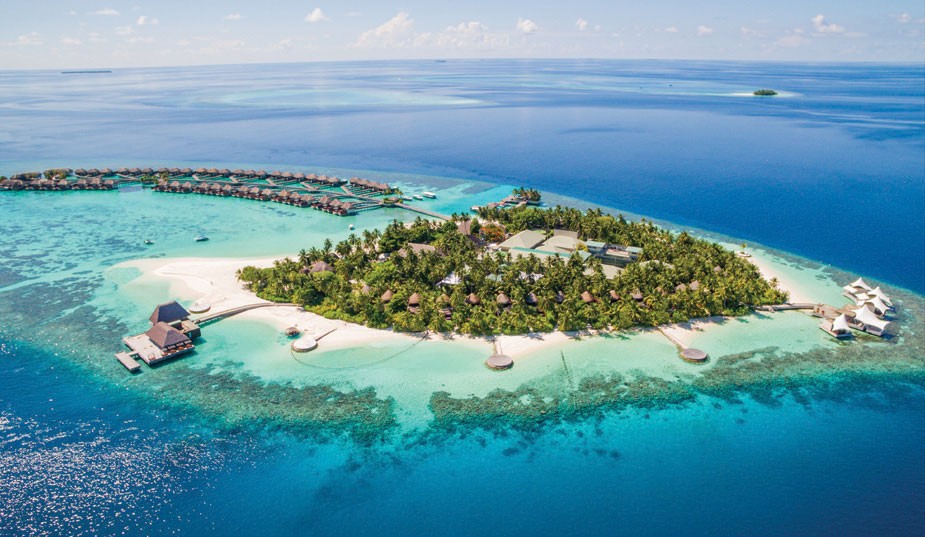 The Maldives' stunning overwater bungalows and pristine waters exemplify its reliance on high-end tourism
The Maldives' stunning overwater bungalows and pristine waters exemplify its reliance on high-end tourism
4. Understanding the Impact of Tourism in Vietnam
While not as heavily reliant as the island nations mentioned above, Vietnam’s tourism industry is vital to its economic growth. With its rich culture, stunning landscapes, and vibrant cities, Vietnam has become a popular destination for travelers from around the world.
4.1. Vietnam’s Tourism Sector: An Overview
Vietnam’s tourism sector has experienced significant growth in recent years. According to the Vietnam National Administration of Tourism (VNAT), the country welcomed 3.66 million international visitors in the first half of 2023, a significant increase compared to the same period last year. Tourism revenue reached an estimated $13 billion during this period, contributing significantly to the national economy.
The growth of Vietnam’s tourism sector is driven by several factors, including the country’s increasing popularity as a tourist destination, the development of new tourism products and services, and the government’s efforts to promote tourism.
4.2. Key Attractions in Vietnam
Vietnam offers a diverse range of attractions that appeal to different types of travelers. Some of the most popular destinations include:
- Hanoi: The capital city of Vietnam, Hanoi, is known for its rich history, French colonial architecture, and vibrant street life.
- Ha Long Bay: A UNESCO World Heritage Site, Ha Long Bay is famous for its stunning limestone karsts and emerald waters.
- Hoi An: A charming ancient town, Hoi An, is known for its well-preserved architecture, tailor shops, and delicious cuisine.
- Ho Chi Minh City: The largest city in Vietnam, Ho Chi Minh City, is a bustling metropolis with a vibrant nightlife, historical sites, and modern shopping malls.
- Sapa: A mountainous region in northern Vietnam, Sapa, is known for its breathtaking scenery, ethnic minority villages, and trekking opportunities.
4.3. The Role of SIXT.VN in Facilitating Tourism in Vietnam
SIXT.VN plays a crucial role in facilitating tourism in Vietnam by providing convenient and reliable travel services to visitors. SIXT.VN offers a range of services, including:
- Airport Transfers: SIXT.VN provides safe and comfortable airport transfer services, ensuring a hassle-free arrival and departure experience for travelers.
- Hotel Booking: SIXT.VN offers a wide selection of hotels in Vietnam, catering to different budgets and preferences.
- Tour Packages: SIXT.VN organizes various tour packages, allowing visitors to explore the country’s top attractions with ease.
- Car Rental: SIXT.VN provides car rental services, giving travelers the freedom to explore Vietnam at their own pace.
5. Challenges and Opportunities in Tourism-Dependent Countries
While tourism can bring significant economic benefits, it also presents challenges for countries that heavily rely on it.
5.1. Potential Economic Risks
Over-reliance on tourism can make a country vulnerable to economic shocks, such as:
- Economic Downturns: During economic recessions, people tend to cut back on travel spending, which can lead to a decline in tourism revenue.
- Natural Disasters: Natural disasters, such as hurricanes, earthquakes, and tsunamis, can devastate tourism infrastructure and disrupt travel plans, causing significant economic losses.
- Political Instability: Political unrest and terrorism can deter tourists from visiting a country, leading to a decline in tourism revenue.
- Pandemics: The COVID-19 pandemic has demonstrated the devastating impact that global health crises can have on the tourism industry. Travel restrictions and lockdowns have led to a sharp decline in international tourist arrivals, causing widespread economic hardship.
5.2. Environmental and Social Impacts
Tourism can also have negative environmental and social impacts, such as:
- Environmental Degradation: Uncontrolled tourism development can lead to environmental degradation, including deforestation, pollution, and depletion of natural resources.
- Loss of Cultural Identity: The commercialization of culture for tourism purposes can lead to the loss of cultural identity and traditions.
- Social Inequality: Tourism can exacerbate social inequality, as the benefits of tourism development may not be evenly distributed among the population.
5.3. Strategies for Sustainable Tourism
To mitigate the risks and negative impacts of tourism, countries need to adopt sustainable tourism practices. Sustainable tourism aims to balance the economic, social, and environmental aspects of tourism development. Some strategies for sustainable tourism include:
- Diversifying the Economy: Reducing reliance on tourism by developing other sectors, such as agriculture, manufacturing, and technology.
- Promoting Responsible Tourism: Encouraging tourists to respect local cultures, protect the environment, and support local businesses.
- Investing in Education and Training: Providing education and training opportunities for local residents to participate in the tourism industry.
- Implementing Environmental Regulations: Enacting and enforcing environmental regulations to protect natural resources and minimize pollution.
- Engaging Local Communities: Involving local communities in tourism planning and decision-making processes.
6. The Future of Tourism and Economic Dependency
The future of tourism is likely to be shaped by several factors, including technological advancements, changing travel preferences, and growing concerns about sustainability.
6.1. Emerging Trends in Tourism
Some emerging trends in tourism include:
- Digitalization: The increasing use of technology in travel planning, booking, and experiences.
- Personalization: The growing demand for customized and personalized travel experiences.
- Sustainability: The rising awareness of the environmental and social impacts of tourism and the demand for sustainable travel options.
- Experiential Travel: The desire for immersive and authentic travel experiences that go beyond traditional sightseeing.
- Wellness Tourism: The growing interest in health and wellness retreats, spa vacations, and other wellness-focused travel experiences.
6.2. Adapting to Change
To remain competitive in the evolving tourism landscape, countries need to adapt to these changes by:
- Investing in Technology: Adopting new technologies to improve the efficiency and convenience of travel services.
- Developing New Tourism Products: Creating innovative and unique tourism products that cater to changing travel preferences.
- Promoting Sustainable Practices: Implementing sustainable tourism practices to protect the environment and support local communities.
- Enhancing the Visitor Experience: Providing high-quality services and experiences that exceed visitor expectations.
6.3. The Role of International Cooperation
International cooperation is essential for promoting sustainable tourism and addressing the challenges facing tourism-dependent countries. International organizations, such as the UNWTO and the WTTC, play a vital role in:
- Providing Technical Assistance: Offering technical assistance and expertise to countries seeking to develop their tourism sectors sustainably.
- Sharing Best Practices: Sharing best practices and knowledge on sustainable tourism development.
- Promoting International Standards: Promoting international standards and guidelines for sustainable tourism.
- Facilitating Collaboration: Facilitating collaboration between countries, businesses, and other stakeholders to address common challenges.
7. Planning Your Trip to Vietnam with SIXT.VN
Ready to explore the beauty and culture of Vietnam? SIXT.VN is here to help you plan the perfect trip.
7.1. Why Choose SIXT.VN?
SIXT.VN offers a range of benefits for travelers visiting Vietnam, including:
- Convenience: SIXT.VN provides a one-stop shop for all your travel needs, from airport transfers to hotel bookings and tour packages.
- Reliability: SIXT.VN partners with trusted service providers to ensure a safe and reliable travel experience.
- Affordability: SIXT.VN offers competitive prices and special deals to help you save money on your trip.
- Customer Support: SIXT.VN provides excellent customer support to assist you with any questions or concerns.
7.2. Services Offered by SIXT.VN
SIXT.VN offers a wide range of services to cater to your travel needs, including:
- Airport Transfers: Enjoy a hassle-free arrival and departure with SIXT.VN’s airport transfer services. Our professional drivers will meet you at the airport and take you to your hotel in comfort and style.
- Hotel Booking: Choose from a wide selection of hotels in Vietnam, ranging from budget-friendly options to luxury resorts. SIXT.VN offers competitive rates and easy booking.
- Tour Packages: Explore Vietnam’s top attractions with SIXT.VN’s tour packages. We offer a variety of tours to suit different interests and budgets, from cultural tours to adventure tours.
- Car Rental: Explore Vietnam at your own pace with SIXT.VN’s car rental services. We offer a range of vehicles to choose from, including sedans, SUVs, and vans.
7.3. Booking Your Trip with SIXT.VN
Booking your trip with SIXT.VN is easy and convenient. Simply visit our website, SIXT.VN, or contact our customer support team to get started. We’ll help you plan the perfect trip to Vietnam.
7.4 Contact Information for SIXT.VN
For any inquiries or assistance, feel free to reach out:
- Address: 260 Cau Giay, Hanoi, Vietnam
- Hotline/WhatsApp: +84 986 244 358
- Website: SIXT.VN
8. Conclusion: Embracing Sustainable Tourism for a Brighter Future
Tourism is a powerful force that can drive economic growth, create jobs, and improve the quality of life for people around the world. However, it’s essential to recognize the potential risks and negative impacts of tourism and to adopt sustainable tourism practices. By balancing the economic, social, and environmental aspects of tourism development, countries can ensure that tourism benefits both residents and visitors alike.
As you plan your next trip, consider the impact of your travel choices and support businesses and destinations that prioritize sustainability. Together, we can create a brighter future for tourism and for the planet.
9. FAQs: Understanding Tourism and Economic Dependency
9.1. How is tourism dependency measured?
Tourism dependency is measured by the ratio between the revenue received from foreign visitors and a country’s GDP. A higher ratio indicates a greater reliance on tourism.
9.2. Which countries are most reliant on tourism?
Countries like the Maldives, Antigua and Barbuda, and the Seychelles are among the most reliant on tourism due to their economies’ structure and attractive destinations.
9.3. What are the economic risks of tourism dependency?
Economic risks include vulnerability to economic downturns, natural disasters, political instability, and global health crises like pandemics, which can drastically reduce tourism revenue.
9.4. How can countries reduce their reliance on tourism?
Countries can diversify their economies by developing other sectors such as agriculture, manufacturing, and technology.
9.5. What are the environmental impacts of tourism?
Environmental impacts can include deforestation, pollution, depletion of natural resources, and damage to ecosystems.
9.6. What is sustainable tourism?
Sustainable tourism balances the economic, social, and environmental aspects of tourism development to ensure long-term benefits for both residents and visitors.
9.7. How can tourists support sustainable tourism?
Tourists can support sustainable tourism by respecting local cultures, protecting the environment, and supporting local businesses.
9.8. What is the role of SIXT.VN in promoting tourism in Vietnam?
SIXT.VN facilitates tourism in Vietnam by providing convenient and reliable travel services such as airport transfers, hotel bookings, tour packages, and car rentals.
9.9. What are the key attractions in Vietnam for tourists?
Key attractions in Vietnam include Hanoi, Ha Long Bay, Hoi An, Ho Chi Minh City, and Sapa, offering a diverse range of cultural and natural experiences.
9.10. How can I book a trip to Vietnam with SIXT.VN?
You can easily book your trip to Vietnam with SIXT.VN by visiting our website or contacting our customer support team for assistance.



